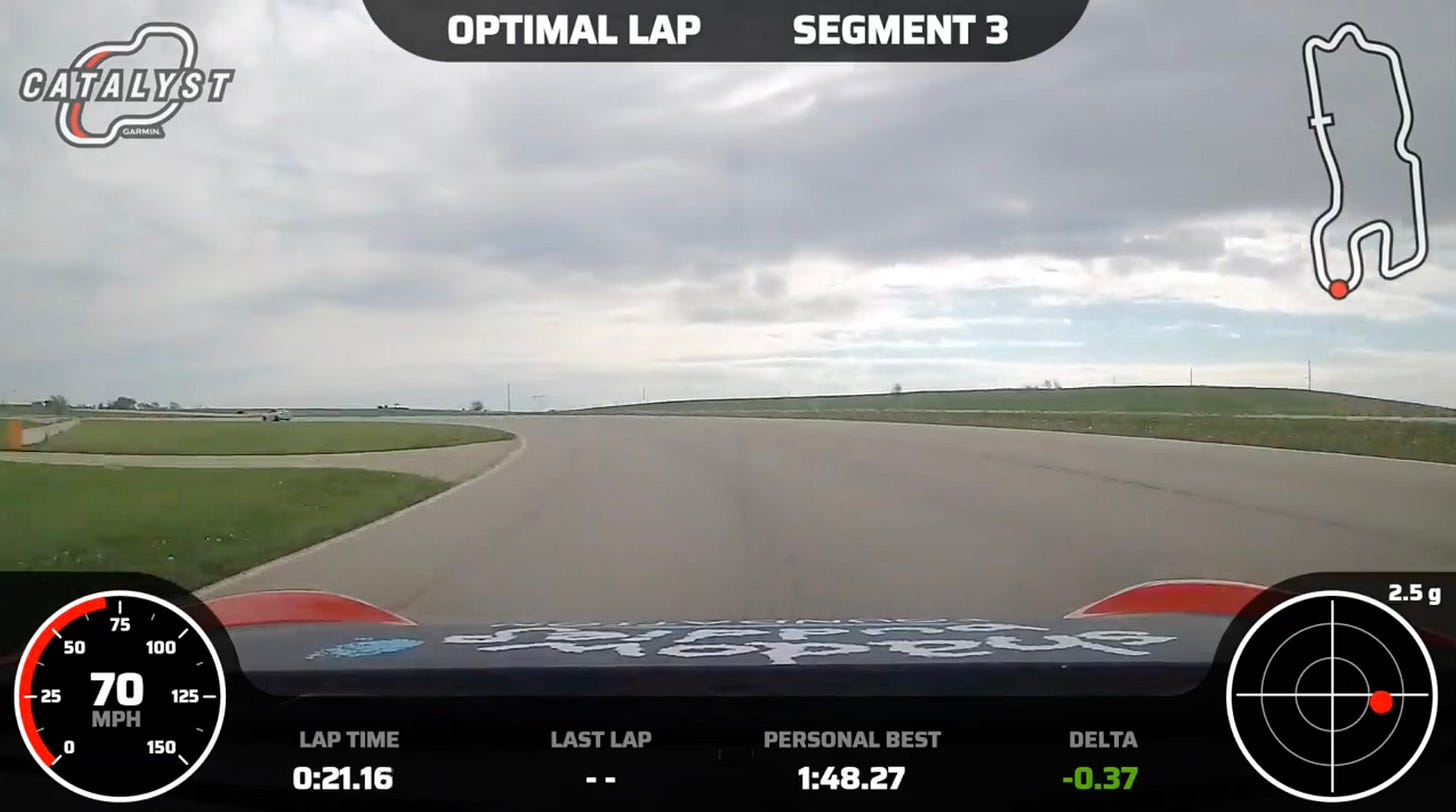I’m going to share what I think is a different way to use your in-car video, and it has all to do with something that separates the best from the rest: pattern-matching.
When you approach an intersection on the street and you think “I just knew that red car was going to pull in front of me,” that’s pattern-matching. Most new drivers are not very good at this, because they haven’t yet seen as many scenarios from the behind-the-wheel perspective of a more experienced driver. But two drivers who have both been driving for twenty years are not necessarily equally good at pattern-matching, either. Some drivers are either more naturally-gifted with this all-important skill, or they’ve developed the ability through practice.
Approaching a corner on the track, many drivers look for singular reference points to determine where to brake, turn-in, apex, and exit the turn. But the best drivers use the pattern made up of multiple references to give them a more detailed cue as to when to begin braking, turn in, ease off the brakes, and arc in toward the apex, and so on. Think of it as watching a low-resolution (single reference) versus high-resolution (the pattern made up of multiple references) video.
This is especially true when dealing with other cars in a passing situation. How many variations are there in the positioning of just two competitors going into one corner? An infinite number of scenarios, right? So how do the best consistently make better decisions? Pattern matching. While no two patterns in a racecraft scenario will ever be the same, there are similarities (as you’ve proven when you’ve identified a car on the street that was going to pull out in front of you).
The good news is that your pattern-matching abilities can be developed. How? First, be aware of the pattern-matching that you’re currently doing. I suspect you’re doing it more than you think you are. So just become aware of how many patterns in the mental snapshots you have as you drive around a track. The more you’re aware of it, the more it’ll sink in and become part of your deep mental programming.
Again, we think that we use singular references for where we begin to brake, turn into a corner, apex, and track out of a corner. But it’s not that simple—at least, it shouldn’t be. Imagine stopping on a track just before the brake zone, and look ahead and into the corner. What do you see, besides your usual references? I bet when you really look at it, you’ll see various angles crossing, merging, and aligning. Again, it’s the relationship of one reference to another, then to another, and another, and so on. It’s that image made up of many references that lead to accurate, consistent, fast laps.

This is where video review can play a big role in helping you develop your pattern-matching skills.
When watching your in-car video, stop the video just prior to the Begin-of-Braking (BoB) point, and look for the pattern. Take a snapshot in your mind of what it looks like.
Forward the video to just before the turn-in point, and do the same. Then go to just before the apex, at the apex, as you begin to unwind the steering wheel, and just before the track-out curb. Stop the video and take in the image ahead, with all of the subtle details.
I know this is going to take time, but do this for multiple laps, until you notice the patterns. The pattern might be when you’ve gotten the car lined up just right, or you might notice that the pattern changes from lap to lap, telling you where you’re consistent (or not).
The interesting thing is the more you do this, the better you get at pattern-matching—at speed. You’re improving your ability to pattern-match while driving at speed by reviewing video!
Now, watch your video again, but the full lap at normal speed, and see how many of the patterns you still notice, and how many you don’t. If there are areas of the track where it’s difficult for you to take in the full pattern, go back to the stop-and-start process.
Here comes the bonus material! Set the video playback speed to 1.25 or 1.5, and watch your full lap at a faster rate. If you’re able to pattern-match at a higher speed, when you slow it back down to normal speed, it’s going to seem easy.
Years ago, when I taught myself to juggle, I’d gotten to a point where I was okay, but didn’t seem to be improving much. What I did next taught me about more than juggling. I deliberately sped up the toss-catch-toss loop… and I dropped a lot of balls. At least for a while. But after some time of forcing myself to juggle faster than I had been, I returned to what was my “normal” speed. At that point, I felt as though I could have carried on a conversation with three people while juggling at the same time (but I stopped short of juggling flaming chainsaws!).
By watching your video at a faster-than-normal speed, when you get on track and see, feel, and hear things at your usual speed, it will feel as though you have more bandwidth. And the pattern-matching will make you more consistently precise with your driving.
This is self-coaching at the next level, and I’d love to hear what it does for you. Drop me a comment below after you’ve gone through this video review.
